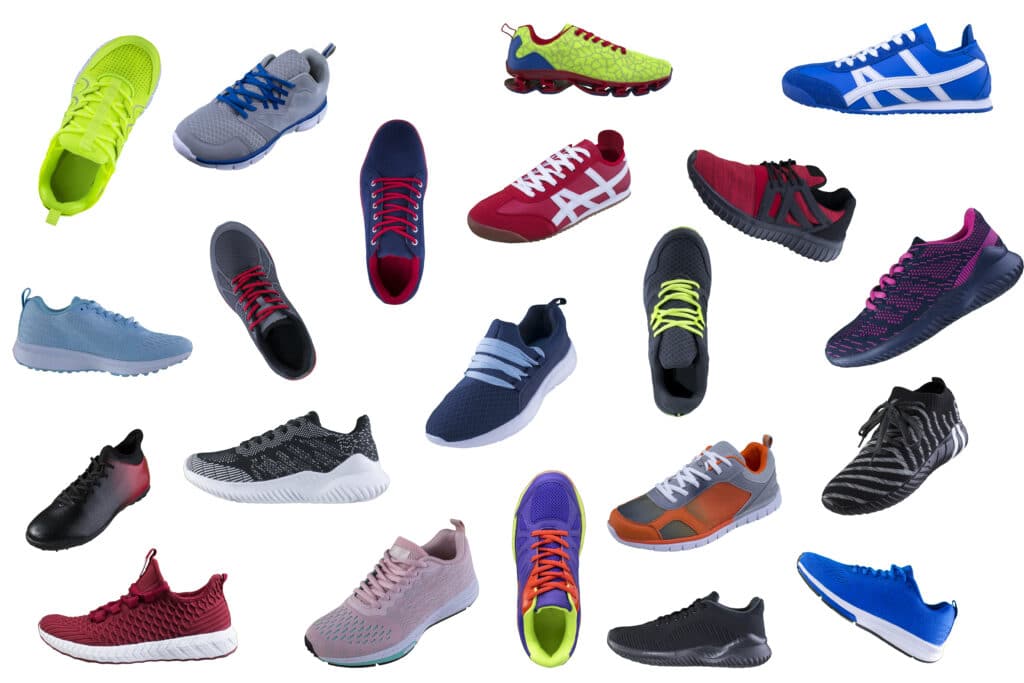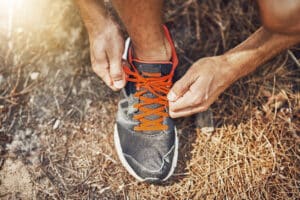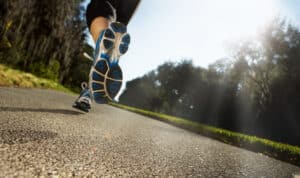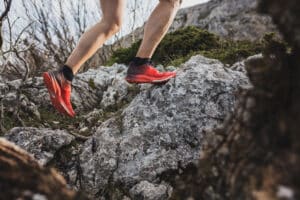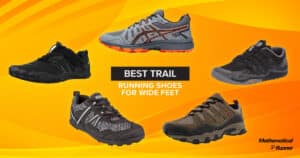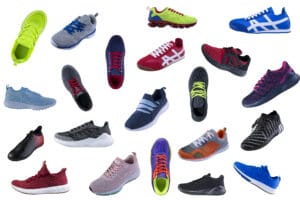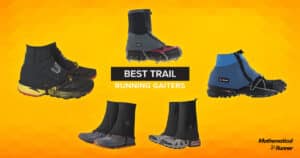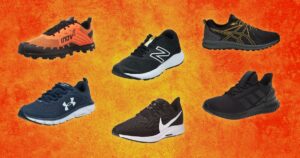The world of running shoes may be perplexing. The distinctions between trail running shoes and road running shoes are explained here.
Year after year, the running shoe market expands, with sales in 2020 exceeding those in previous years. During the lockdown, brands like On claimed a 200 percent spike in ecommerce sales, and Hoka One recorded a 75 percent rise in sales.
This is wonderful for running, but if you’re new to the running shoe industry, it may be a confusing and daunting experience. It’s tough to know where to begin because there are so many various brands, styles, and types of shoes available.
To assist you in making your selection for trail running shoes vs running shoes, we’ve divided down two of the most common running shoe categories: trail running shoes and road running shoes. The goal is to assist you in determining whether you need one pair for both types of terrain or two distinct pairs.
Most essential, whether you’re running on the road or on the trail, your choice of shoe should make you smile.
Confused? To learn more about trail running shoes vs running shoes, continue reading…
When Do You Need Running Shoes for the Road?

The impact of tougher asphalt surfaces like pave ments and highways is absorbed by road running shoes. The midsole, which houses the majority of the shoe’s cushioning, is often designed to cushion the foot on hard surfaces while also returning some energy to assist increase your stride while you run.
The shoes themselves are often light and made of breathable or mesh material, which helps to dissipate any excess heat. Many are now created with one-piece uppers consisting of a single piece of cloth that wraps firmly around your foot like a sock.
Some are built for shorter distance running, such as 10k or 5k events, and assist you lose those critical seconds by losing any unnecessary weight. Others, such as half marathons and marathons, are designed for greater distances. These will give greater cushioning and bounce for assistance along the 26.2 mile course.
Carbon-fibre plates are the most recent cutting-edge technology that is becoming increasingly popular in the running business. A carbon-fibre plate is integrated into the sole of Nike’s breakthrough Air Zoom Alphafly Next shoe, which was famously utilised by Kenyan runner Eliud Kipchoge in his historic sub-2hr marathon in 2019. It is meant to deliver a large energy return, behaving almost like a spring.
The inclusion of the carbon plate proved so popular that other shoe makers rapidly followed suit, releasing versions of their own models with various sorts of carbon in the midsole. These are designed for runners who want to move as quickly as possible.
WHEN DO TRAIL RUNNING SHOES COME IN HAND?

Trail shoes are built with more gripping bottoms than road running shoes to help you get off the tarmac and into the fields and fells. They’re made to be more grippy, durable, waterproof, and cushioned to help you get through everything the trails throw at you, whether it’s gravel, rocks, puddles, or slick tree roots.
The soles are sometimes composed of thicker, more durable rubber (typically produced by Vibram or Continental) that wraps around the shoe’s edges for increased traction. Protective measures are frequently included in the uppers to prevent tears from brambles and thorns.
They are frequently waterproof (some are made of Gore-Tex) to keep your feet dry in the event of a rainfall or having to wade through a stream.
Trail shoes are for you if you ever decide to head out into nature and leave the highways behind.
CAN YOU BUY ONE PAIR OF TRAIL AND ROAD RUNNING SHOES?
There are certain running shoe styles that are suitable for both. Rather of taking a pair of road shoes on the trails, they will usually be trail shoes that you will wear on the roads.
This is primarily due to grip — many road running shoes have little to no grip because it isn’t necessary while running quickly on concrete. When you’re out on the trails, however, it’s all about the grip. The soles of most trail running shoes feature ‘lugs.’ These knobbly protrusions assist you in moving through muddy or slick terrain.
On inov-8’s game-changing Mudclaws, which are built for the very wettest, boggiest, claggiest running conditions, these lugs may range from a minimum grip of 1mm to a stud-like 8mm. Longer lugs are less ideal for running on roads since they might be unpleasant on flat, hard surfaces.
Trail shoes are also made to provide additional stability when walking on rough terrain. When crossing fields and woodlands, the possibilities of twisting your ankle on a rut or concealed rabbit hole are significant, hence trail shoes are designed to provide ankle stability through sturdier construction around the heels.
This also implies that the more off-road running you do, the stronger your ankles will get, lowering your risk of injury.
KEY DIFFERENCES BETWEEN TRAIL RUNNING SHOES & RUNNING SHOES
To understand trail running shoes vs running shoes, we’re explaining the key differences between running shoes and trail running shoes below.
A Different Kind Of Surface, Demands That Are Unique.
Running is a high-impact exercise, and running on hard, homogeneous surfaces, such as asphalt, places more stress on weight-bearing joints like the knee, hip, and ankle than running on softer surfaces.
To decrease the impact and offer a sturdy base to land on and push off from repeatedly, most road running shoes integrate shock absorption technology and support elements.
It’s a completely other ballgame when it comes to trail running! It’s a matter of choosing shoes that react well to the unexpected terrain you’ll be running on, as well as meeting the terrain’s grip, traction, cushioning, and underfoot protection needs. Most off-road (trail or hill) shoes are neutral and built to be very flexible so that both your feet and the shoes can easily adapt to the terrain.
Depending on the top and midsole structure, different models will give varied amounts of support.
Let’s have a look at how road running and trail running shoes are made now that we know why they need to be manufactured differently.
The Structure of a Shoe
Running shoes are made with a great deal of science. Each model is distinct due to the variances in construction and technology used. A running shoe is made up of various pieces that may be divided into two categories:
- The tongue, laces, mesh, and heel tab/collar make up the upper.
- The midsole and the outsole make up the sole.
In road running and trail running shoes, each of these components will be built differently, making them more fit for the terrain they’ll be utilised on.
Variations in the Sole
Midsole
The first difference: Cushioning
The midsole is the section of the shoe that sits between the outsole and the insole. It’s where the cushioning comes from: the type of foam utilised determines the amount of cushioning and stability provided by a shoe.
Because they are designed for firm terrain, road running shoes are often more cushioned than trail running shoes. However, there are road running shoes that are firmer and more responsive. Trail running shoes that are softer and more cushioned also help.
The second difference: Heel-to-Toe Drop
The thickness of the midsole varies from heel to toe in most road and trail running shoes (thicker at the heel end and thinner at the toe box). This is referred to as the “heel-to-toe drop,” “offset,” or “profile.”
This drop is usually higher in road running shoes to protect your Achilles and legs from the hammering impact on pavement.
It’s usually lower in trail running shoes (keeping you down to the ground) to improve ankle stability and proprioception (the sense of self-movement and body position). Increased responsiveness and awareness on uneven terrain come with strong proprioception.
Off-road running necessitates a high level of faith in your footwear, but if you can improve your sense of where your foot is landing, you will have significantly more balance.
The third difference: Medial Post
Most stability road shoes have a medial post, which is a harder density foam insert positioned on the medial side (inside) of the midsole. The medial post’s job is to keep you from over pronating.
To avoid restricting the natural motion of the foot, trail running shoes do not feature a medial post. But don’t worry; you’ll be fine running in trail running shoes if you wear stability road shoes. Every trail is unique. You could find yourself following a river through a lovely valley, mounting the jagged edge of a hill, or becoming lost in an overgrown forest. The medial post would only operate as a barrier, impeding your mobility when it was most needed.
Outsole
The outsole of your shoes is the component that makes direct contact with the ground. This is what will allow you to get traction. Road and trail shoes have different outsole materials and constructions.
The outsole of most road running shoes is constructed of blown rubber, which provides great traction in both dry and wet situations. The design differs from one brand to the next, as well as from one model to the next. The outsole is frequently divided to provide a seamless transition from heel to toe. The lugs can also be shaped to promote a quicker transition from heel to toe.
Inov-8’s motto for trail running shoes, ‘Get A Grip,’ pretty about says it all. When the going gets tough, trail running shoes will give significantly more grip. Trail shoes contain a stickier substance on the sole to provide grip on rocky, uneven terrain, as well as lugs to aid traction on soft ground.
The depth of lugs varies a lot, thus the deeper the lug, the better if you’re seeking for a shoe to combat bogs. If you’ll be walking on asphalt, choose a shoe with a shallower lugged sole so the shoe doesn’t get too damaged on the road.
Upper
The top of trail running shoes is built of more durable and harder materials to protect your feet and better handle trail terrain and hazards than a road shoe. Rocks, tree roots, and other obstacles must be avoided at all costs! Water resistant fabric is used on most uppers to keep water out.
The top of road running shoes is typically light and thin, allowing for excellent ventilation. The majority of brands now makes one-piece uppers that stretch and support in the right areas. The top form and fit/feel will change from one brand to the next, so try on a few to see which one is right for you.
Sizing Suggestions for Shoes
A running shoe should, in general, feel solid, gripping your ankle without slipping in the rear and cradling your midfoot without being too narrow width-wise.
It’s also important to have enough room in the toe box. You risk acquiring blisters, black toe nails, or cutting off blood flow and circulation if your shoe is too narrow in length. When standing up, you should have a half to one thumb’s breadth of space between the end of your longest toe and the front of your running shoes.
FREQUENTLY ASKED QUESTIOS
Longer, thicker lugs on the outsoles of trail running shoes provide significantly superior grip on a range of terrains. You’ll need their soles to grip slick, damp terrain and plough through muck and bogs.
To avoid any lifting or moving over uneven terrain, a trail shoe should fit tightly around the midfoot/arch area and create a locked-down sensation in the heel. Make sure there’s at least a thumb’s breadth of space between the tips of your toes and the end of the shoe in the forefoot.
Because one’s feet expand while they run, Christine Luff of verywell.com suggests going up half a shoe size because it’s crucial to have enough of room in the toebox. Blisters or black toenails might occur if the toes are jammed into the front of the running shoe.
Your toes should be able to spread out freely. Your toes should not be restricted or touch the shoe’s end. Your heel should be comfortably cupped in the rear of the shoe, ensuring that your foot does not slip out of the back.
Conclusion
Once you’ve decided from trail running shoes vs running shoes, whether you’ll be sticking to the pavement or hitting the trails, visit your local store to try on shoes from several manufacturers and compare models. Do not choose what appears to be the finest, but rather what feels the best!
RELATED ARTICLES

